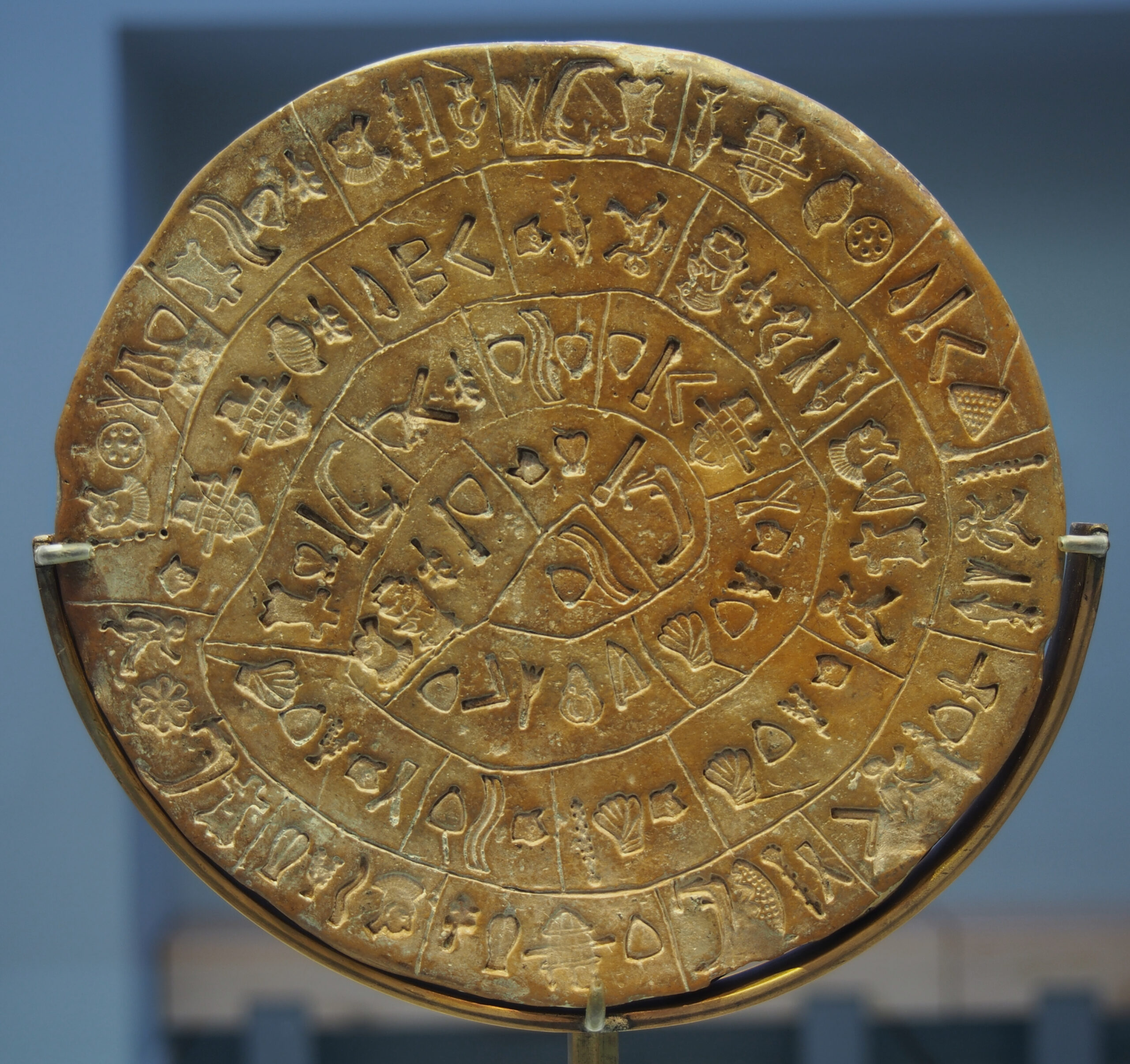The Indus Valley Civilization (IVC), which thrived from approximately 3300 BCE to 1300 BCE, represents one of the earliest cradles of human civilization. Stretching across modern-day Pakistan, northwest India, and parts of Afghanistan, the IVC stands out for its urban sophistication, technological prowess, and enigmatic script that has defied attempts at decipherment.
This article provides an in-depth exploration of the civilization, debunking myths, examining notable discoveries, and shedding light on its legacy.
Table Of Contents
- Chronology: The Evolution of the Indus Valley Civilization
- Urban Planning: A Marvel of Ancient Engineering
- Technological Innovations and Craftsmanship
- Economic System: A Global Trade Network
- Cultural and Religious Practices
- Language and Script: An Unsolved Puzzle
- Key Discoveries and Archaeological Highlights
- Mohenjo-Daro: The Jewel of the Indus Valley Civilization
- Debunking Myths About the Indus Valley Civilization
- The Decline of the Civilization
- Legacy of the Indus Valley Civilization
- Conclusion
Chronology: The Evolution of the Indus Valley Civilization
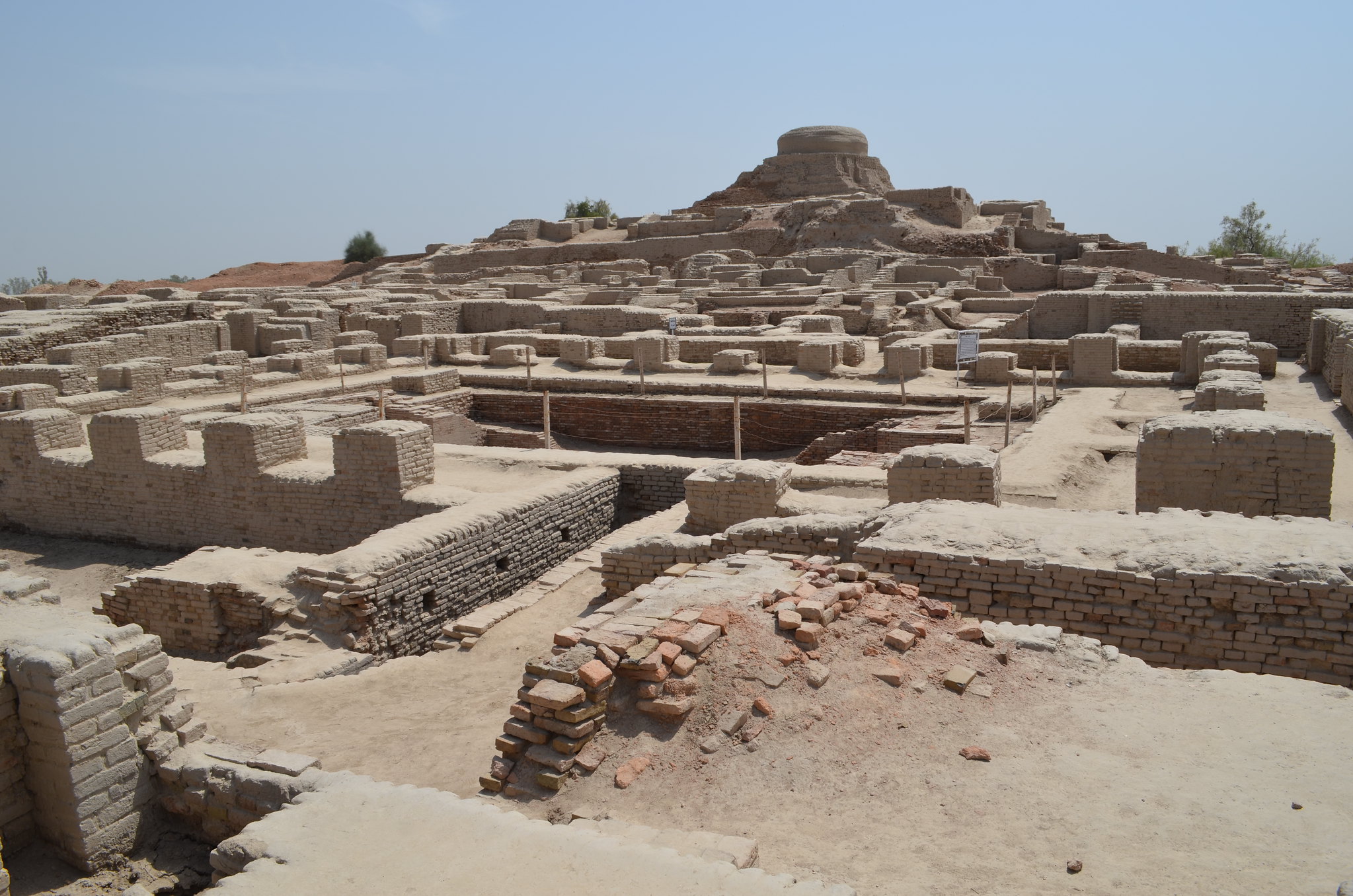
1. Early Harappan Phase (3300–2600 BCE)
- Characterized by small, dispersed settlements engaged in agriculture and trade.
- Early indications of planned urban layouts and use of baked bricks.
- Artifacts reveal rudimentary trade connections with neighboring regions.
2. Mature Harappan Phase (2600–1900 BCE)
- Urban centers like Mohenjo-Daro, Harappa, and Dholavira emerged, showcasing meticulous planning, advanced drainage systems, and large public structures.
- Flourishing trade networks with Mesopotamia, Central Asia, and the Persian Gulf.
- Standardized weights, measures, and crafts point to an organized economy.
3. Late Harappan Phase (1900–1300 BCE)
- Decline of major urban centers and a shift toward rural settlements.
- Possible causes include environmental changes, river shifts, and monsoonal patterns.
Urban Planning: A Marvel of Ancient Engineering

The Indus Valley cities were unparalleled in their urban planning:
- Grid Layouts: Cities like Mohenjo-Daro and Harappa were built on a grid, with streets intersecting at right angles.
- Sophisticated Drainage: A network of covered drains carried wastewater out of the city, reflecting advanced sanitation practices.
- Public Amenities: Large public baths, granaries, and marketplaces suggest a focus on communal life and organized governance.
- Standardization: Bricks of uniform size across cities indicate centralized planning.
These features highlight a society that prioritized hygiene, civic amenities, and efficient governance.
Technological Innovations and Craftsmanship
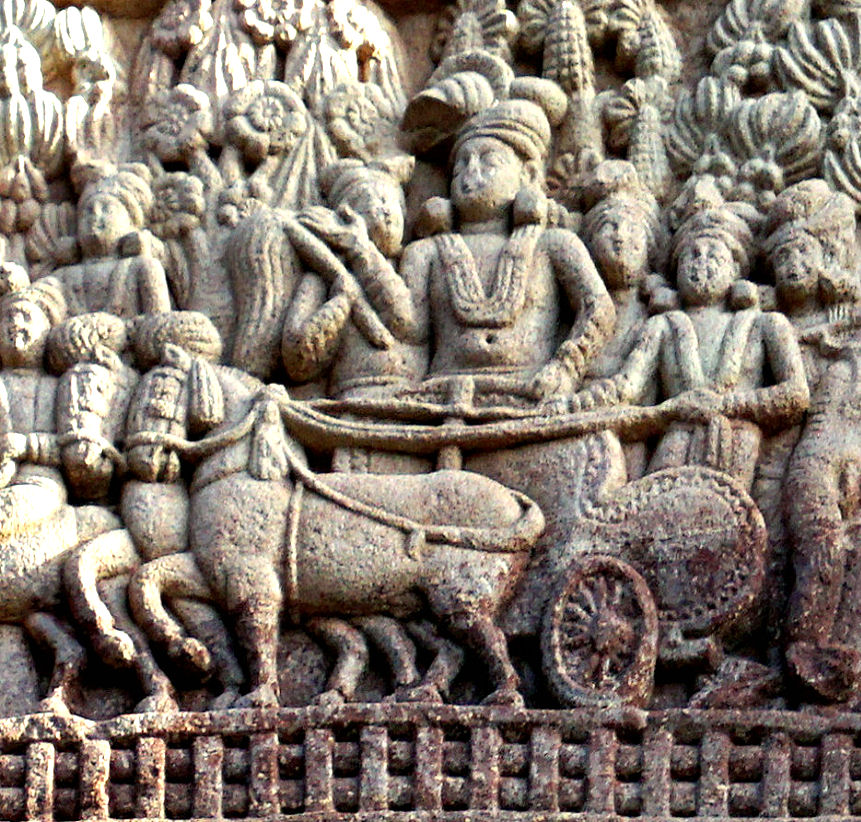
The IVC showcased remarkable technological achievements for its time:
- Metallurgy: Extensive use of copper, bronze, lead, and tin for tools, ornaments, and sculptures.
- Pottery: Intricately designed, wheel-made pottery often with geometric or natural motifs.
- Bead Making: Semi-precious stones like carnelian, agate, and lapis lazuli were skillfully crafted into beads for trade and ornamentation.
- Engineering: Construction of dockyards, reservoirs, and water channels reflects advanced hydraulic engineering.
Economic System: A Global Trade Network

Trade formed the backbone of the IVC economy:
- Internal Trade: Standardized weights and seals suggest regulated internal trade across cities.
- External Trade: Evidence of trade with Mesopotamia, Bahrain (Dilmun), and Oman, with goods like cotton, beads, and lapis lazuli exchanged for metals and luxury items.
- Maritime Trade: The dockyard at Lothal in Gujarat, India, underscores the significance of maritime commerce.
Cultural and Religious Practices
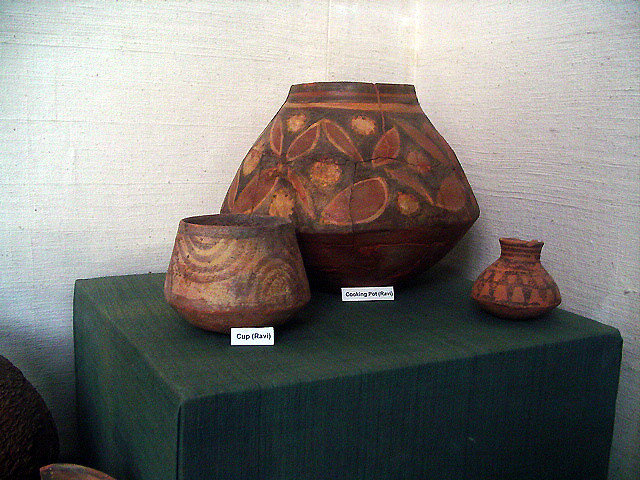
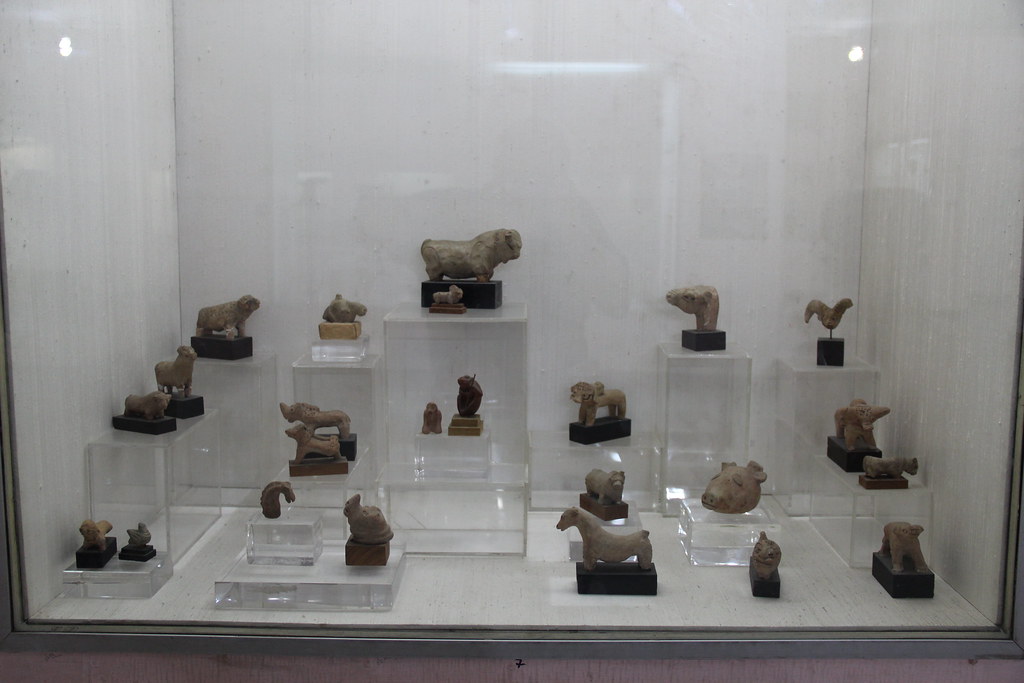
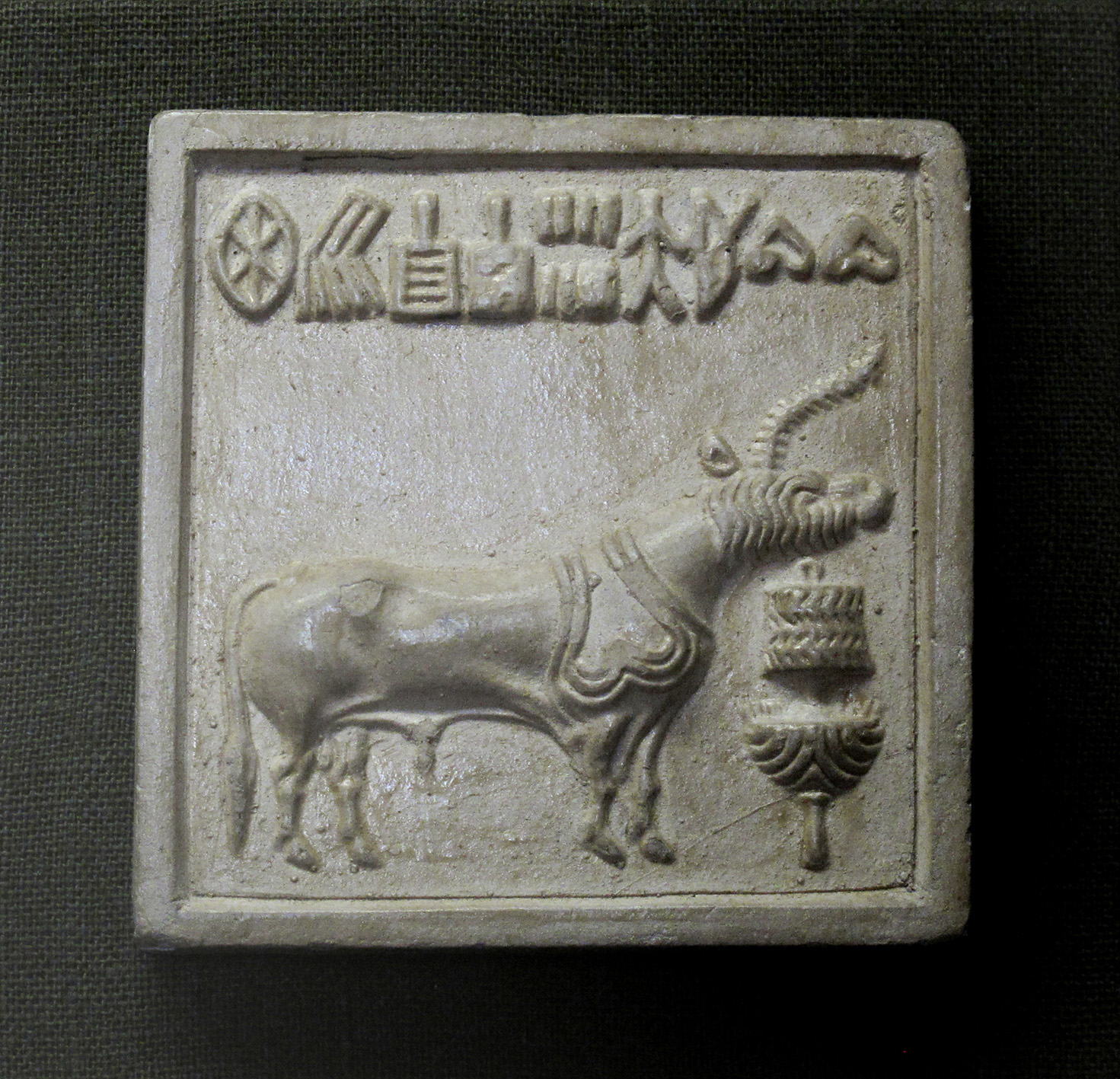

The Indus Valley people practiced unique cultural and religious traditions:
- Figurines and Seals: Depictions of animals, fertility symbols, and a proto-Shiva figure suggest religious and ritualistic beliefs.
- Burial Practices: Evidence of both burial and cremation practices indicates diversity in beliefs about life and death.
- Daily Life: Artifacts like toys, musical instruments, and dice reveal a community that valued leisure and creativity.
Language and Script: An Unsolved Puzzle
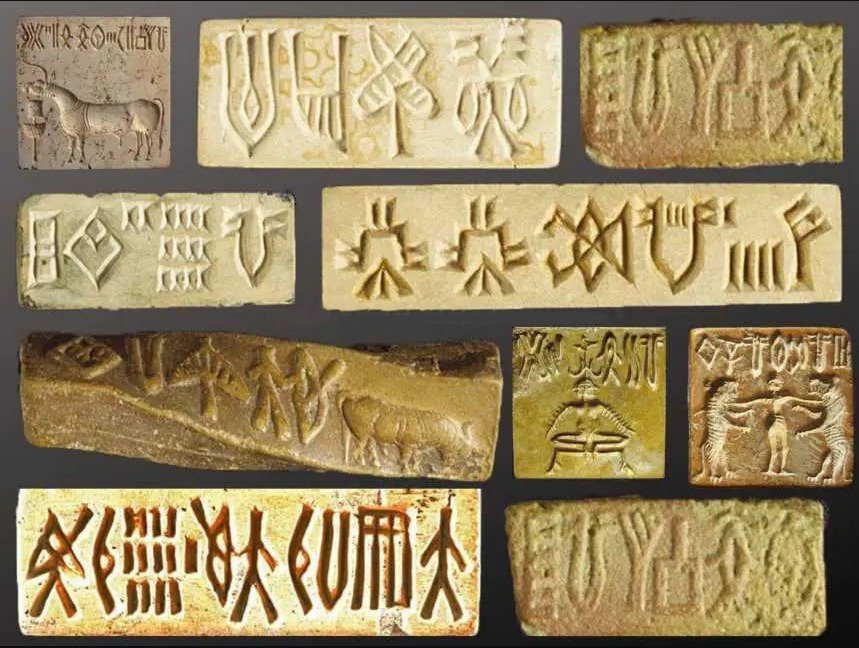
The IVC script is one of the greatest mysteries in archaeology. Comprising about 400 symbols, it is found on seals, pottery, and tablets.
Key Theories:
- Dravidian Hypothesis: Suggests a connection to proto-Dravidian languages.
- Pictographic Script: Some believe the symbols represent objects or ideas rather than phonetic sounds.
- Economic Records: Others argue it primarily served administrative or commercial purposes.
The lack of bilingual texts and short inscriptions has hindered decipherment efforts.
Key Discoveries and Archaeological Highlights

- The Great Bath at Mohenjo-Daro: A massive, watertight structure possibly used for religious purification.
- Granaries: Found in Harappa and Mohenjo-Daro, these suggest organized food storage and distribution.
- Indus Seals: Steatite seals bearing intricate designs and inscriptions, used for trade and administration.
- Bead Workshops: Evidence from sites like Chanhudaro highlights advanced craftsmanship.
- Dockyard at Lothal: A remarkable feat of engineering, crucial for maritime trade.
Mohenjo-Daro: The Jewel of the Indus Valley Civilization
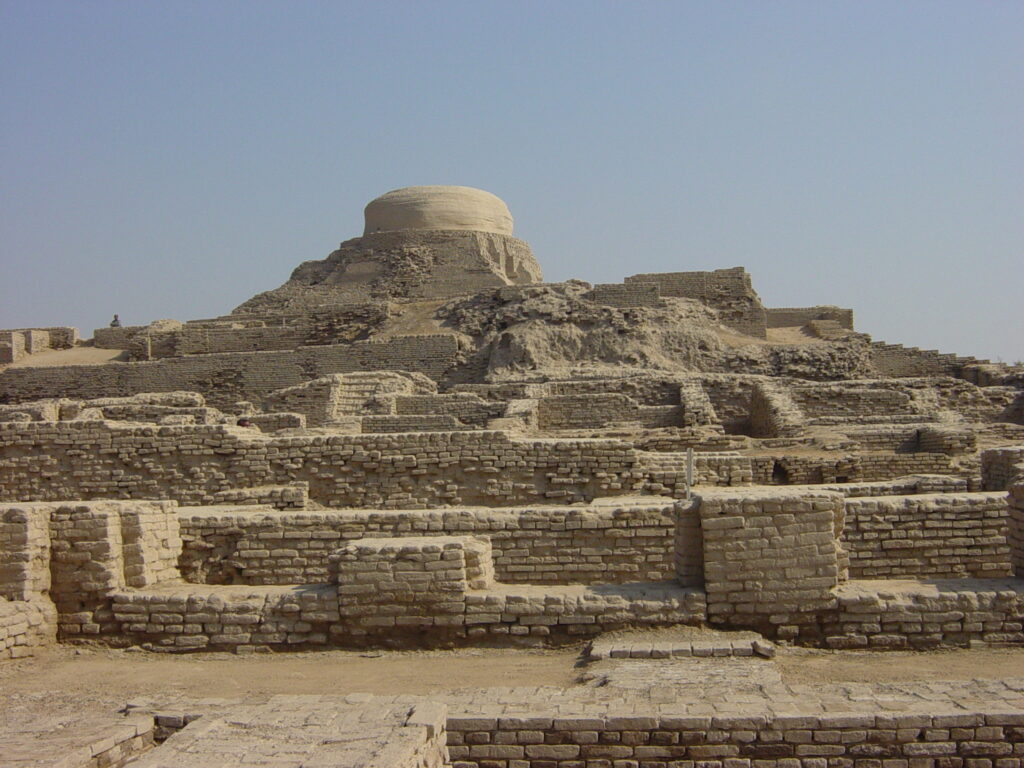
Mohenjo-Daro, meaning “Mound of the Dead,” was one of the largest cities of the IVC, located in present-day Sindh, Pakistan.
Key Features:
- Urban Layout: A meticulously planned city divided into the Citadel (elite residential and administrative area) and the Lower Town (general residential area).
- The Great Bath: A rectangular pool with a sophisticated drainage system, possibly for ritual bathing.
- Advanced Water Systems: Wells and drainage channels were a hallmark of Mohenjo-Daro.
- Artifacts: Numerous seals, weights, and terracotta figurines have been unearthed.
Mohenjo-Daro remains a UNESCO World Heritage Site and a symbol of the IVC’s brilliance.
Debunking Myths About the Indus Valley Civilization
Myth 1: The Aryan Invasion Theory
- Modern studies challenge the idea that Aryan invaders caused the decline of the IVC. Environmental changes are more plausible.
Myth 2: A Completely Peaceful Society
- While large-scale weapons are absent, fortified structures suggest concerns about security.
Myth 3: Isolation
- Extensive trade links debunk the myth of an isolated civilization.
The Decline of the Civilization
The IVC’s decline around 1900 BCE is attributed to multiple factors:
- Environmental Shifts: Drying of the Saraswati River and unpredictable monsoons disrupted agriculture.
- Resource Depletion: Overuse of natural resources led to economic strain.
- Migrations: Populations moved eastward, integrating with other cultures.
The civilization’s decline was gradual, with no evidence of violent destruction.
Legacy of the Indus Valley Civilization
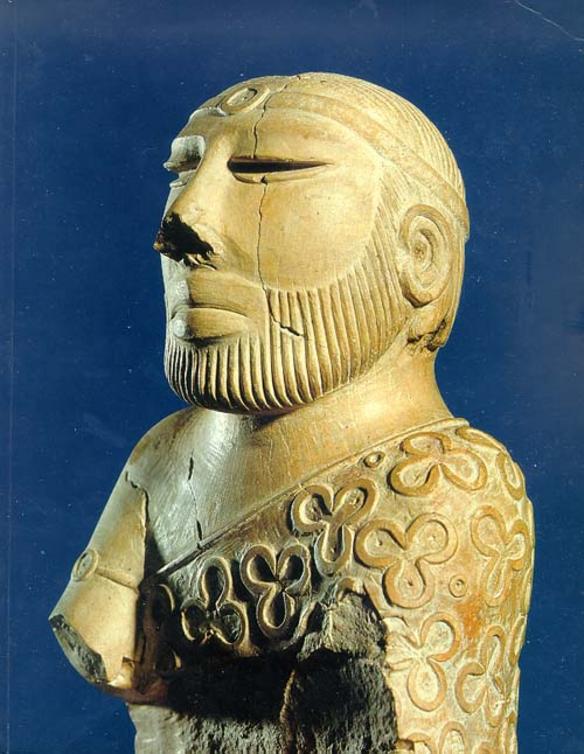
The IVC’s legacy continues to shape South Asia:
- Urban Planning: Influenced later cities in the Indian subcontinent.
- Craftsmanship: Techniques in bead-making and metallurgy persist in traditional crafts.
- Cultural Continuity: Practices such as water rituals and symbolic seals echo IVC traditions.
Conclusion
The Indus Valley Civilization stands as a testament to human ingenuity, resilience, and creativity. Its advanced urban design, trade networks, and cultural practices continue to inspire modern societies. As research progresses, the IVC will undoubtedly yield more secrets, enriching our understanding of ancient human history.
